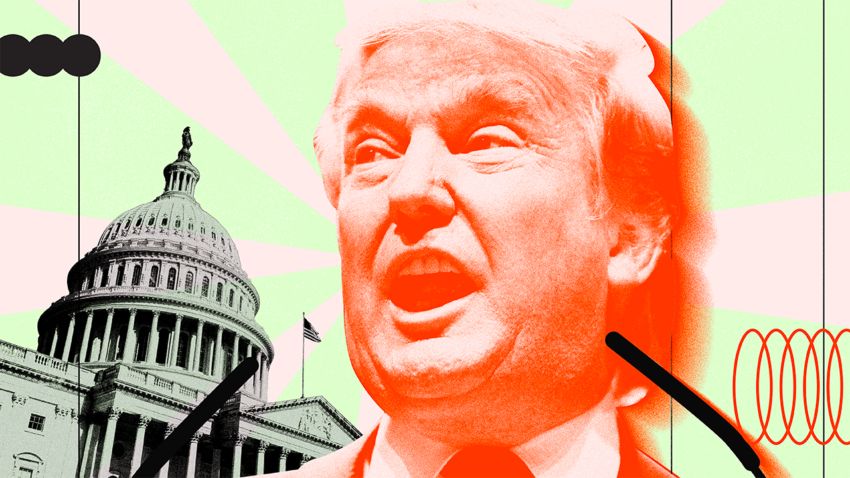Certora Levels the Playing Field, Open-Sourcing Prover for DeFi Security
Certora, a leading blockchain security platform, has open-sourced its most advanced formal verification engine, Certora Prover, to make smart contract security more accessible for everyone in the crypto sector.
This move from Certora couldn’t have come at a better time as hackers proliferate the digital asset space and steal funds.
“Security remains one of the biggest challenges in Web3. DeFi projects spend millions on audits and often take over a year to launch, yet vulnerabilities continue to put billions of dollars at risk,” remarked Certora CTO Shelly Grossman, adding, “While high-profile exploits have become less frequent, securing smart contracts remains expensive and out of reach for many developers. That changes today.”
Data from blockchain analysis firm Chainalysis reveals that a whopping $2.2 billion was stolen by hackers in 2024, which is an increase of 21% from a year ago. Not only has the dollar amount surged, but so has the number of incidents.
As the crypto adoption rises, gaining traction among both retail and institutions, and the market booms with the total cryptocurrency market cap sitting above $3 trillion, bad actors are certainly multiplying. These cybercriminals are adopting increasingly sophisticated methods and broadening their scope by exploiting weaknesses in smart contracts, which are the backbone of protocols and the DeFi ecosystem.
Against this backdrop, Certora is offering a powerful solution to DeFi developers, which identifies all possible bugs and then proves their absence. By supporting multiple popular chains, viz. Ethereum (EVM), Solana (sBPF), and Stellar (WASM), Certora ensure that the vast majority of the crypto space is protected against smart contract attacks.
Prover is Certora’s flagship security product, which utilizes formal verification to catch the hardest and rarest bugs. In production for “a long time,” the tool is finally released to the general public.
The Certora Prover essentially acts as an automated mathematical auditor, analyzing smart contract code and developer-defined rules to provide proof of correctness. This way, it goes beyond limited scenarios, evaluating every possible case. Developers have already written over 70,000 verification rules.
It was actually with the help of Certora’s formal verification technology that a fundamental flaw in MakerDAO’s DAI equation, which has been undetected since 2018, was finally caught. Findings like this show that even multiple audits can’t fully remove the vulnerabilities of a smart contract, but a formal verification can help uncover them.
With this tool, Cetora has also been helping the likes of Aave, Uniswap, Lido, EigenLayer, Solana Foundation, and many others protect tens of billions of dollars in TVL.
However, Certora had its code closed-sourced all this time, which is finally changing in a move to offer all the developers in Web3 a strong tool for absolutely free to make sure that their smart contracts are secure, transparent, and community-driven.
“Smart contract security should not be a privilege reserved for well-funded teams or highly educated people. Open-sourcing the Certora Prover is a step toward making bulletproof smart contracts the norm,” said Certora CEO Mooly Sagiv.
Freely available for all, Certora is currently inviting developers, security researchers, and the Web3 community to employ the solution to verify their smart contracts and help advance its efforts to make DeFi secure.
Bitcoin’s Low Volatility: A Warning or a Market Shift?
Bitcoin is operating in a nearly critical equilibrium zone. Usually subject to marked fluctuations, the asset has recorded historically low implied volatility in recent days, a situation that intrigues as much as it worries analysts. While markets wait for a strong signal, a well-known figure in the sector, Michael Saylor, suggests a new massive buying movement for his company Strategy. Is the bitcoin market on the brink of an explosive movement? As open interest in BTC futures declines and volatility reaches historical lows, some indicators suggest that a period of high activity could follow.
For several days, the implied volatility of bitcoin has been in free fall. According to data from Glassnode, the volatility indicator realized over one week reached 23.42 %, a level rarely seen. “In four years, it has only been lower a few times: in October 2024 (22.88 %) and in November 2023 (21.35%)”, specifies the on-chain analysis. These levels remind us of those that, historically, preceded major price movements.
Such a situation occurs in a context where bitcoin seems stuck in a narrow range, despite events that could potentially influence its price, such as the recent massive hack of Bybit . Yet, even after this attack, bitcoin finished its session in the same price zone where it has been trading for two weeks, highlighting an unusual inertia for the asset.
If volatility indicators signal a period of calm, other elements might suggest an imminent resurgence of activity. The CEO of Strategy, Michael Saylor, shared on February 23, 2025, on platform X (formerly Twitter) a chart of the company’s bitcoin holdings, an action often associated with massive acquisitions in the past. “I don’t think it reflects everything I did last week,” he stated , suggesting that additional purchases might be underway.
Meanwhile, a decline in open interest for bitcoin futures has been observed, dropping to its lowest level since February 9. Analyst Daan Crypto Trades specifies on February 22, 2025, on the social network X that “a decrease in open interest combined with a stable price can be a good reset, provided the spot market takes over.” In other words, if bitcoin is currently in an accumulation phase, a bullish movement could follow if sufficient buying pressure emerges.
Data suggests that the market is in a waiting phase, but historical precedents show that such periods have often been followed by significant price movements. Glassnode reminds us that prolonged drops in implied volatility have, in the past, preceded “major volatility spikes”, even though the direction of the movement remains uncertain. If accumulation continues and institutional buying confirms, bitcoin could trend upward with a potential target around $100,000, as some observers anticipate. Conversely, if the market fails to find sufficient momentum, a correction could be on the agenda.
The Game-Changing Network Transforming Bitcoin
The giant Fidelity has published an optimistic report on the Lightning Network, a network that enables instant and nearly free bitcoin transactions.
It is a secondary network anchored to the Bitcoin network that increases transaction throughput and payment privacy.
The Lightning Network compensates for the slowness and sometimes high fees of “on-chain” transactions. In jargon, this is referred to as “Layer 1” and “Layer 2.” Layer 1 is the Bitcoin blockchain, while Layer 2 is the Lightning network.
The Bitcoin network is designed to generate a transaction block every 10 minutes. Each block can weigh up to 4 MB, or about 3,000 transactions. This is little, but by design. It would have been very easy to increase the size of the blocks, but at the cost of decentralization.
The possibility of increasing block size has long been debated and led in 2017 to the BCH (Bitcoin Cash) fork. It was unsuccessful as one BCH is now worth 0.3% of one BTC. The market deemed that a blockchain with unlimited block sizes would undermine decentralization.
Decentralization relies on the existence of numerous nodes that form the backbone of the Bitcoin network. They validate transactions and ensure that the protocol is strictly followed, especially the limit of 21 million BTC.
However, the number of nodes is directly proportional to their cost, which depends on the memory required to store the blockchain (currently 630 GB). Increasing block size would increase this cost and ruin the decentralization without which bitcoin would be worthless.
Developers like Thaddeus Dryja thus proposed the Lightning Network where transactions take a fraction of a second for negligible fees. All of this without compromising the fundamental properties of Bitcoin (decentralization).
Payment for a coffee with the Lightning Network:
The Lightning Network was launched in 2017 to counter the proponents of large blocks who eventually created BCH via a hard fork.
Since then, thousands of cryptocurrencies have been launched claiming to solve the “problem” of Bitcoin’s low transaction throughput. This is obviously not the case. Security was prioritized, and increased transaction throughput was obtained thanks to the Lightning Network.
That said, its growth remains modest. The reason is that bitcoin is primarily perceived as a store of value. It is indeed preferable to spend your euros or dollars before your bitcoins. Not to mention the capital gains tax (which could soon disappear in the United States).
Moreover, note that using the LN first requires performing an on-chain transaction to transfer bitcoins to a wallet specifically dedicated to the Lightning network (French Phoenix , Breez, Zeus, etc.). So there’s no need to hesitate to make significant top-ups to endure during times of high fees on the Bitcoin network.
Once this initial transaction is made, transactions become instantaneous and nearly free. The Fidelity report states that fees average 0.02% for transactions between 100 and 1000 euros. It’s 0.24% for transactions between 1 and 10 euros.
“Transactions exceeding a million satoshis (~ 1,000 €) cost between 0.39 $ and 1.27 $. This fee/transaction ratio is rare in the traditional sector”, it can be read.
The transaction speed is also nothing like that of the Bitcoin network. Voltage’s figures indicate that payments of less than 1000 euros occur in less than a second.
Data from Voltage shows an increase of nearly 200% in payment volumes between 2023 and 2024. That’s 2,400% since 2022. Encouraging, but payments via the LN remain a drop in the ocean of global transactions via Visa, Mastercard, etc.
Notably, exchange platforms such as Coinbase and Kraken have implemented it to reduce withdrawal fees for bitcoins by their clients. The decentralized social network Nostr also uses the LN so its users can send tips in the form of “zaps.” They sent more than 3.6 million over the past six months according to the report.
The growth of the LN could also come from banks that currently use the SWIFT network and multiple third parties that significantly slow down international transfers (clearing houses, correspondent banks, etc.). Not to mention the costs.
The LN could become a technology for immediate and definitive international settlement between banks. Especially if bitcoin establishes itself as the international reserve currency…
The report also highlights another interesting aspect of the Lightning Network: the “Taproot Assets” protocol. Taproot assets extend the functionality of LN beyond simple bitcoin transfers. It allows transferring any type of tokenized asset. For example, stablecoins, gold, or corporate bonds, etc.
“Therefore, we anticipate continued growth of the Lightning Network, despite the perception of bitcoin as a store of value that discourages its spending”, concludes Fidelity.
The Lightning Network has not finished astonishing. It will certainly take off when the capital gains tax is abolished everywhere in the world…
Let’s conclude by stating that no cryptocurrency can claim to execute transactions cheaper than with the Lightning Network.
Hong Kong Asia Holdings Expands Bitcoin Investment Plans
The plan by Hong Kong Asia Holdings to expand its Bitcoin reserves has piqued market interest. After originally showing an unexpected rise in its stock price following its first acquisition, the company has just been authorized to purchase more Bitcoin.
Behind this audacious action, though, the Hong Kong government is simultaneously developing a new plan to turn the city into a worldwide virtual asset hub.
💥BREAKING:
Hong Kong Asia Holdings just got approval to buy more Bitcoin for its balance sheet!
ASIA IS BULLISH ON #BITCOIN 🚀 pic.twitter.com/1otVu0SEE2
— Crypto Rover (@rovercrc) February 23, 2025
The board of directors of Hong Kong Asia Holdings has at last approved increased Bitcoin investment. Using internal funds valued at HK$5.9369 million, the corporation recently bought about 7.88 BTC. Their total Bitcoin holdings now stand at 8.89 coins thanks to this transaction; their average cost per Bitcoin is roughly HK$756,200.
Originally, the first acquisition of one Bitcoin on February 16 instantly raised the stock price of the company by approximately 93%. In a few days, It is logical that market players are closely observing this next phase with tremendous excitement.
Still, the choice to keep accumulating Bitcoin is not only about normal investment. This underscores a growing trend in Hong Kong, where businesses are beginning to see digital assets as a component of their long-term financial plan.
On the other hand, the government of Hong Kong is not just sitting around. According to CNF , the city has presented a fresh road map to help it to remain a worldwide virtual asset hub. This phase covers several facets, including staking services, tighter licensing rules, and growing the digital trading environment.
Under this approach, Hong Kong intends to grow derivatives trading services, OTC (over-the-counter), digital asset custody, and crypto asset financing. Attracting additional global liquidity and persuading institutional investors that Hong Kong is a safe and reliable location for their digital investments are obviously the main objectives.
This action also fits the growing local businesses’ curiosity in Bitcoin and other cryptocurrencies. More companies may follow in the footsteps of Hong Kong Asia Holdings with better rules and government backing.
Regarding digital asset rules, the Hong Kong government is well recognized to be rather proactive. Looking prepared to challenge other digital asset hubs like Singapore and Dubai, the city seems set with a new agenda including a spectrum of crypto-based financial services.
Regulating changes, meanwhile, also provides certain difficulties. Not all market actors can react as fast as restrictions get stricter. The new criteria might overwhelm some companies, particularly those used to operating in a more free environment.
For larger companies like Hong Kong Asia Holdings, though, this legislation might really be a benefit. More institutions may join the market if more rules help to lower the uncertainty risk.
Given more companies beginning to buy Bitcoin, one wonders whether this will develop into a new trend in Hong Kong. Should the government be successful in transforming the city into a virtual asset hub, we could observe increasing public corporations, including Bitcoin, on their balance sheets.


 最低価格
最低価格 最高価格
最高価格 














































